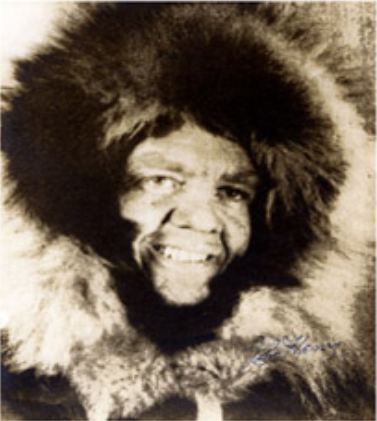By Mike Messina for Your Public Media
“What a night – couldn’t see my hand in front of my face, so dropped down on all fours and crawled in the direction of the tractor, – just a few feet away mind you, and I just don’t know how long it did take me to reach the back door of the tractor which was now half buried in the snowdrift…recorded -60 below,” wrote Connecticut native John Henry Von der Wall on September 25, 1934. Von der Wall was a member of an Antarctic expedition led by Rear Admiral Richard E. Byrd. Byrd was the first person to fly over the South Pole and North Pole (although the latter claim remains a matter of debate). This was Von der Wall’s and Byrd’s second expedition to explore and study this empty and isolated continent.

John Henry Von der Wall, 1933-35. Connecticut native John Henry Von der Wall is shown wearing his Antarctic expedition gear – Connecticut Historical Society
Von der Wall Joins Byrd’s South Pole Expeditions
Byrd used a combination of snowshoe, dogsled, snow tractor, and airplane to explore Antarctica during his second expedition (1933-1935). Von der Wall, a life-long resident of Bolton, Connecticut, and master diver in the US Navy, was a tractor driver and the first man to dive under the polar ice. The expedition arrived at Byrd’s post in Little America on January 17, 1934, with 56 men, 147 dogs, 4 airplanes, a handful of snow tractors, and tons of food and supplies. For over a year, the team went on a variety of exploring trips throughout the continent. The extreme cold weather paired with the treacherous icy landscape meant danger on every journey.
Von der Wall described an accident that occurred as one of the airplanes took off for an exploration trip:
[The plane] glided and after a short run took off the ice surface….it headed out over the dangerous pressure ridge with its tons upon tons of ice reaching skyward as if trying to grasp this giant bird of mankind and haul it into mighty yawning crevasse, it seemed to grin and mock at is ability to stay aloft. Then the unexpected happened…we saw the giant plane stagger as if hit or grasped by some unseen hands…the camp was alive…men came from everywhere…the pilot was struggling with the controls…the plane was losing altitude fast…the plane headed towards the smooth barrier [of ice] and crashed burying its left wing and part of its motor in the snow.
Luckily, nobody was seriously injured in the crash and there were no deaths on the expedition.
Despite the difficulties, the explorations were successful, bringing back new information about the landscape, weather, and wildlife of the South Polar regions. Byrd made three more expeditions to Antarctica to learn more about the frozen continent.
Mike Messina is the Interpretive Projects Associate at the Connecticut Historical Society.
© Connecticut Public Broadcasting Network and Connecticut Historical Society. All rights reserved. This article originally appeared on Your Public Media.
Note: ConnecticutHistory.org does not edit content originally published on another platform and therefore does not update any instances of outdated content or language.









